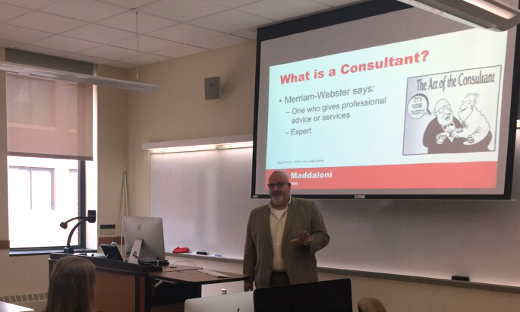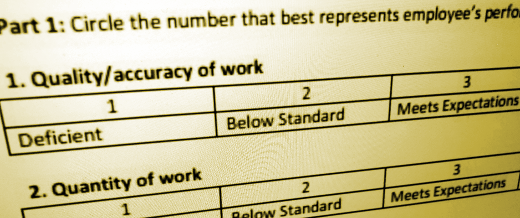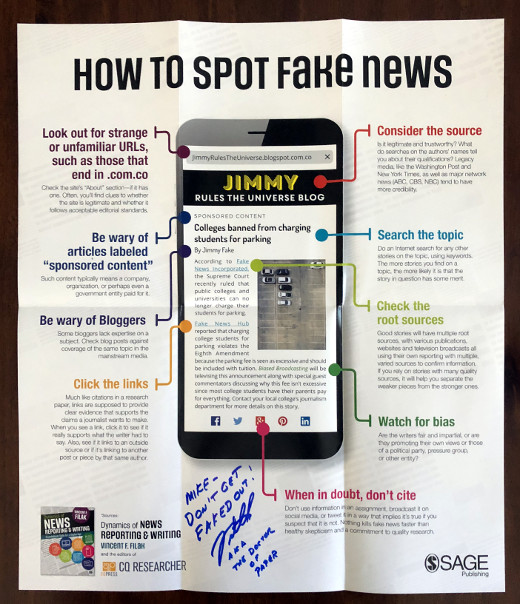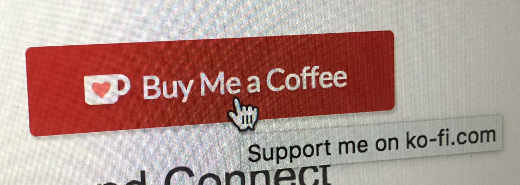My Guest Lecture at University of Wisconsin – Oshkosh on Consulting

Great interactive classroom instruction coupled with real-world work opportunities provide the best educational experience for students. When you have the chance to help make that happen, it’s extremely rewarding. That happened for me recently as I was a guest lecturer at a university class.
I was honored to be asked once again by Dr. Sara Steffes Hansen, a professor at University of Wisconsin – Oshkosh and chair of the Journalism department. Her class, Application of New & Emerging Media, provides that educational experience working with entities in the community on their social media and beyond. As her students make on-site visits to their clients, I was asked to speak to the class on the topic of consulting.
Last year I spoke to students in the same class, but after their client visit, where this year it was ahead of it. As meeting face-to-face with clients involves many factors – factors many don’t execute on well – I incorporated a role play into the interactive lecture. With a “volunteer” student, I did an improvised sketch where the student was the client and I was the bumbling, unprepared consultant. This segued into my discussion on preparing for and executing on the on-site visit, as well as the follow-up and deliverables from the class assignment.
For me, this guest lecture served many purposes. As I have learned from others, both in the classroom and in the real world, I welcome the opportunity to share my experience and “war stories” with the students. As someone who still thinks and works like a consultant, poor consulting skills from others stick out like a sore thumb soaked in sriracha and lit on fire! If this lecture can help guide students down the path of honing their consulting skills, then the world will be that much better.
This class is part of the UW – Oshkosh’s Interactive Web Management major, which is a combination of curricula from Computer Science, Marketing, Journalism and Information Systems. It is a unique major, mashing up key aspects of each of these areas to offer a comprehensive educational background for how companies today are staffing roles in marketing and tech.
Where you needed to be enrolled in the class to get the full lecture, I am sharing my slides. You can link to the slides from my guest lecture here on SlideShare, or view them embedded below. I am planning on coming back to the class at the end of the semester to watch their client presentations. In the meantime I wish great success to the students of Journalism 61-440!
This is from The Hot Iron, a journal on business and technology by Mike Maddaloni.
Did you enjoy this? Subscribe to The Hot Iron by RSS/XML feed or Read by Email.
Announcements • Business • Strategize • Technology • Thrive • (0) Comments • Permalink
Talking About Fake News in 2004
It seems everywhere you look today you see something about fake news, from those calling something fake news to those who are defending themselves for not being fake news. However, the idea of fake news is nothing new, and as a matter of fact it was something that I was talking about publicly into 2004.
Yes, I said 2004, 14 years ago from now.
So why would I remember today what happened a decade and a half ago? Interestingly I was triggered to recalling it from a poster by a colleague of mine, Dr. Vincent Filak, professor of journalism at the University Wisconsin – Oshkosh. The poster is about how you can spot fake news and was created as a complement to his recently published collegiate textbook, Dynamics of News Reporting and Writing: Foundational Skills for a Digital Age.
Now let’s take a trip back along memory lane and talk about how even then I realized this was an issue that would be impacting not only news but the Internet and the Web as well.
Back in time
In the spring of 2004 I was asked to speak at the annual conference for winners from Massachusetts of the Hugh O’Brien Youth Leadership Award, best known as HOBY, that was taking place at (then) Babson College in Wellesley, Massachusetts. I had been a recipient of the award back in the 1980s when I was a high school sophomore and recently I had connected with the state HOBY organization in Massachusetts because of something I had written. Shortly after the death of retired New England Patriots player Ron Burton, who after leaving the football gridiron was a champion for charitable causes in the Boston area including the HOBY award, I had written about him on my former Web site GoPats.com – as I have retired that Web site, you can read the original article I wrote on Burton here thanks to the Internet Archives’ Wayback Machine.
After connecting with the HOBY organization about my article, they asked me to speak at their 2004 conference for 2 purposes, one as part of a remembrance of Burton and to participate in a panel about the media. The panel was would consist of Steve Burton, a Boston sportscaster for WBZ-TV and Ron’s son, sportswriter Dan Shaughnessy from the Boston Globe and myself, a technology strategist representing the Internet. I was honored to be asked to speak to the students, and I also realized the challenge of representing the Internet along with two well-known journalists, but I was up to the challenge.
As the conference began, following a video tribute of Ron Burton which included a video from Hugh O’Brian himself, I gave my tribute, talking about the 2 times I met him over the years. Next up was the panel on the media, with myself, Burton and Shaughnessy. Each of us had a few minutes for an introduction to talk about our expertise. Burton spoke first, then Shaughnessy and finally myself. As I listened to their opening statements I felt a little intimidated representing all of what the Internet was and is, but is someone who is been working with it professionally at that point for over a decade, I felt very comfortable and confident in sharing my knowledge to these young people who themselves never knew a time without the Internet.
Following this was a Q&A session where the students asked a lot of great questions. One in particular that I remember was on believing what you read online. First Burton spoke, and what I recall from his comments was him talking to journalistic integrity and how on television you had to make sure to get it right the first time, for even if you have the opportunity to retract it later, many people may not see that retraction as you would in a newspaper. When Shaughnessy spoke, he took more of a cavalier approach; I remember him started out by saying that you really can’t believe anything you read on the Internet. This was not surprising to me because this reflected his writing style, which I consider arrogant, and is why I only occasionally read his columns.
After his comment about not believing anything you read online, and while he was still talking, I reached into my blazer pocked and grabbed my PalmPilot handheld device (remember, this 2004 and PalmPilots were what we used back then!) and I opened up the Web clipping app for the Globe, Boston.com, and brought up an article was written by Shaughnessy about the Boston Red Sox that I had just read that morning. When it was my turn to respond I held it up my PalmPilot and, in a casual way, pointed out I had read Shaughnessy’s latest article online and questioned if I should believe it! He was a little taken aback by my opening line.
I continued my thoughts to the students by simply saying you should know your source. Whether you read it online or watch it on TV or read it in the newspaper, you should have an idea of where the information is coming from, and if the method you are reading it is a reputable one. I reinforced the point by saying if you are unsure, you should ask someone – a parent or teacher – and in any case they should take what they have consumed and form their own opinion. This approach is something I keep front of mind and share with others to this day.
And thus a modern journalism guide triggered me to remember that event from so long ago in context to today. To build on that, I not only try to understand the story but the headline as well – there are many Web sites and sources that deliver what ends up being misleading headlines in the hopes of you clicking on them, reading whatever the story is about, and in the process gaining ad impressions on their Web site. I have found these “fake headlines” linking to stories by legitimate journalists I am familiar with, only to read a story that doesn’t match the headline. Knowing your source is not only more involved but vital today.
Deconstructing Recognizing Fake News
Sadly I believe the idea of fake news has been around even longer than before I did my talk back in 2004. The concept of yellow journalism and opinions by early newspaper publishers have tried to influence readers for years. In a digital world where it takes much less resources to disseminate news – real or otherwise – being able to decipher the true from the fake has a greater importance. Where some look to the media companies and the government to solve this problem, the ultimate responsibility falls on ourselves. Buyer – or reader – beware!
This is from The Hot Iron, a journal on business and technology by Mike Maddaloni.
Did you enjoy this? Subscribe to The Hot Iron by RSS/XML feed or Read by Email.
Business • Strategize • (0) Comments • Permalink
Buy Me A Coffee With Ko-fi To Support The Hot Iron
Over the past decade plus that I have been writing here at The Hot Iron, I have mentioned this is a labor of love, writing and sharing my thoughts with you reading it. For most of that same time I have explored options to make a little money from my endeavor, and I present my latest one with Ko-fi.
Buy Me a Coffee, Please
I came across Ko-fi a couple of times in the same day, which prompted me to check into it. It is a free service which allows you to post a button to your Web site or share a link to your personal Ko-fi page, where someone can choose to buy you a coffee, which is in essence giving you money. You can choose to follow others on Ko-fi or have them follow you. You can try all of this yourself by clicking the "Buy Me a Coffee" button on the right column of my blog (or click the photo in this post), or follow this link to my Ko-fi page.
In order for me to receive the money (presumably earmarked for a hot caffeinated beverage) I tie my PayPal account to it, and funds are deposited there. As a result it is a straight cash transaction, and no actual coffee is exchanged in the process, unless I move the money from my PayPal account.
But wait, could there be more?
Where in some regard it is not much different than putting a PayPal donation button or link on my blog, Ko-fi is a unique approach as it is not an ask for cash rather an offer for someone to buy me a beverage. The community around the profile page shows the extent to how folks have supported by coffee consumption, which is usually not far from my keyboard or notebook when I am writing.
Of course when I see something like Ko-fi, the entrepreneurial part of my brain is triggered, and there is great potential for this service. The idea of micropayments are not new, but this is a new, unique way of asking for them. A coffee company - hello, Starbucks or Peet's - could be a sponsor or even an owner of it and tie their current gift cards and mobile apps to Ko-fi, thus making the coffee purchase that much easier to the recipient.
As I mentioned, Ko-fi is in a long line of methods for asking for contributions from my readers. I have had Google AdSense ads on my blog for years, which over time has contributed some but has waned as display ads become almost invisible and blocked by Web browser plug-ins. CentUp was a short-lived service which required you to create an account both to give and receive. Google Contributor offered the ability to block ads from being displayed if you contributed money to a site, but it has been all but eliminated by the search giant. Ko-fi is free, but asks me to buy it coffee, which I have done out of support for it, and to ensure its developers are well-caffeinated when doing their part.
Deconstructing Earning Revenue for Blogging
As the early days of the Web were driven by the free distribution of content, later attempts to earn revenue for content have had a mix of success. Large newspapers and magazines have struggled with earning digital subscribers as their print subscriptions plummet. Attempts at paywalls are met with people finding ways to avoid them and get the content for free. Smaller publishers have also had the same mixed results, most positives coming from extreme niche content. These gaps have driven services like Ko-fi to find a different way to help publishers earn money. Where others have failed, it remains to be seen if a unique payment service could gain traction. If anything, small publishers like myself are certainly cautiously optimistic.
This is from The Hot Iron, a journal on business and technology by Mike Maddaloni.
Did you enjoy this? Subscribe to The Hot Iron by RSS/XML feed or Read by Email.
Blogging • Business • Social Media • Strategize • (0) Comments • Permalink
Penalizing Managers For Giving Bad Reviews As Afterthought

As the new year starts, for many it is also the start of the annual review process with their employer. Where this process varies from company to company, typically it entails creating goals for the coming year, taking into consideration the goals for the team, organization, group etc. and then at the end of the year measuring if you met those goals or not along with feedback that was accumulated throughout the year.
Ask any person who goes through this process and they will likely tell you they would rather spend time standing in line at the DMV! Many people feel it's a waste of time, not only in the fact that they have to spend time working on it but also at the end of the year a couple of things typically happen - one, they don't get a raise or a bonus, and two, for the first time they learn at the end of the year of something that happened months ago or even earlier in the year.
When you get written up on something in December that happened in March, how can you really do anything about it, nine months later, to affect any change? In other words, the performance appraisal process is broken, and I have an idea to fix it -penalize the manager that gives you a poor review or feedback at the end of the year as an afterthought when they had the opportunity to tell you earlier.
Say what?
If you think about it, at the end of the year when someone is giving you a review, their own personal review doesn't necessarily reflect yours. It should, for a manager should be measured on the overall performance of their team, as they should be ensuring their team is excelling at all times. Some manager do believe in this (including, fortunately, the manager I have now), however many managers don't want to be bothered by this throughout the year and as a result giving a poor performance review at the end of the year is really no skin off their teeth and comes naturally to them. Sometimes that poor performance review is based on asking others who have worked with you to provide their input, which is often referred to as a 360° review process. Even when organizations say they have a "immediate feedback mechanism" to let people know when they do well or when they do poorly, it rarely happens this way. Finding out about a problem at the end of the year when there's really nothing that can be done about it serves nobody well.
If the person giving the negative feedback is giving it too late, it is they themselves that should be marked down for it in the end of the year process. This gives the person giving the poor review skin in the game and makes them part of the solution. The whole idea is to inform people at the time something happens that something was unsatisfactory or could've been done better or could've been corrected. When it's given at that point, the person that has the opportunity to make the correction, discuss impacts on their workload that impacts their success, identify the need for education or training or greater organizational issues that need to be addressed that the manager may not even be aware of, et. al. The person and their manager or whomever is giving the negative feedback can then together put a plan in place to lead to success, along with a timeframe and measurement.
Been there, wish it was done
Many times throughout my career I have been on the receiving end of negative feedback too late to do anything about it. When I asked why nothing was brought up sooner, I was never given a definitive answer, namely as the review process did not require it. On the flipside, I have had many managers who gave me continuous feedback, comments, adjustments, etc. as I worked with them, and this was not only greatly appreciated but led to my success and the success of the project I was working on. I also hear this from friends and colleagues that hear of such late-in-the-game feedback they can do nothing about, which simply makes the workplace even less tolerable.
Deconstructing Giving Timely Feedback
Why not strike while the iron is hot, and give feedback while it is fresh, meaningful and can produce a positive outcome? This takes facing issues head-on, something many managers may not be comfortable with or other senior people don't want to be bothered with. By making these mid-game corrections, it allows everyone to succeed, and may also impact the bottom line of the team or organization. This investment in one's team is as important as any training or materials you spend money on them, and can reap even greater rewards.
This is from The Hot Iron, a journal on business and technology by Mike Maddaloni.
Did you enjoy this? Subscribe to The Hot Iron by RSS/XML feed or Read by Email.
Business • Strategize • Thrive • (0) Comments • Permalink
7 Blog Topics Written in 2007 That Are Still Relevant Today

Back when this little blog from which you are reading this post turned 10 a year ago, I started thinking about what I have written over these years, especially that first year. As a new writer at a time when social media was still in its infancy, I wondered what topics or “hot irons” I decided to “strike” a decade ago. This led me to pour through the archives of The Hot Iron and reading what I wrote in 2007.
As it turns out it was a mix, from well thought-out articles to short pieces that would have probably been social media posts had those networks been more prevalent. In all, I made 236 posts over 365 days. Where some in hindsight I probably would have written differently or perhaps not at all, there were many I read which pleased me that I shared my thoughts with my new audience. Overall, there were 7 topics or themes which I covered back then that I feel are still relevant today, and I would like to share them with you on a short trip down memory lane.
1. Domain Names – As the genesis of this blog was from, and was to support, my former Web consulting business, coupled with the fact I felt many people knew very little about domain names, I wrote several articles on domain names that first year. Over the years, I continued to write even more about domain names because, even after over 2 decades of they being commercially available to the public, I felt then – and still today – domain names are not well understood.
Among the posts included Be the master of your own domain (name) on registering domain names in general, Own the Domain Name for Your Name to encourage my readers to register the domain name for their own name, Know Who Manages Your Domain Name as many register domains but will forget where they did so, Beware Unsolicited Invoices for Your Domain Name on deceptive practices for selling registration and Web-related services by sending what looks to be a legitimate invoice, Domain Name Owners Not Who You Would Think on missed opportunities to register domain names and Observations of German Domain Names about how this American saw domain names in action in Germany.
Ten years later, I think all of these posts and what they discuss are very relevant. As I work with firms and talk with people about domain names today, much of what I wrote could inform them, and possibly save them time, money and headaches.
2. Networking – I never took a class on networking in college or afterwards, namely for until recently there was never such a thing. What I learned about meeting and connecting with people I learned literally on the job, through trial and many errors, as well as successes. Perhaps I should have developed a class on it (or perhaps I still should?) but as a close second I wrote about several aspects of it.
Posts on networking I wrote were My Networking Event Checklist about how I prepare for networking events, Community building is up to ALL of us on why I network, Nametags Essential for Networking on why there’s nothing wrong with wearing nametags and Time to Write The Note Cards on following up with people after meeting them.
In several of these posts I mention Jason Jacobsohn, someone whom I met online then in real life after following his blog Networking Insight, which today is still a vibrant resource on the art and science of networking. Even though I no longer have my own business, the need for connecting with others still exists, and is the driver for why I recently started dMorning.
3. Opportunity Cost – Shortly after starting my business I learned quickly about trade-offs, and when you do something it often doesn’t allow you to do another. Through this balancing act I had a flashback to college and penned All I remember from Economics 101 - Opportunity Cost. Where opportunity cost has come into play for much of my life, as it does for most of us, it was intensified when I was the boss and sole staff of my business. This discipline was an on-going effort, and helped by seeking the counsel of other small business. As time went on, and jobs replaced my business and my family grew, recognizing the opportunity cost of one decision over another became even more important in my life.
4. Customer Service – The challenges I faced as a small business owner, I learned, were not that much different than those faced by much larger organizations. However I was always stunned how an entity with many, many more employees could still miss the mark on things that, to me, were obvious. I thought that then, and sadly I still do today.
In 2007, JetBlue Airlines had an incident where passengers were stranded on an airplane. During a discussion on this with a colleague, an idea popped into my mind, which I wrote in A Free Idea for David Neeleman, an open letter to Neeleman, the founder and then CEO of the airlines, and I offered to him this idea. I have no idea if he, or any other airline CEO, ever read it. But by hearing the customer services disasters airlines still experience in 2017, my guess is not.
5. Accessbility – My first exposure to Web site accessibility came when I helped a friend who is legally blind with his PC. This was a rare case of providing tech support to a friend that had a benefit – learning the world of accessibility tools. I learned about JAWS, a leading “screen reader” which literally reads aloud what is appearing on the screen – be it icons, a menu or what is in a Web browser. Where this was great to be exposed to, I also learned of the challenges he faced with using the Web – most Web sites are not designed or programmed to make it easy for someone who is visually impaired to navigate and use them.
I wrote specifically about my experiences with my friend’s computer in a post called Unintentional Unusability where I barely scratched the surface on many areas, and mentioned how a design decision for this very blog was based on this experience. It was because of this I was eager to adopt the now-defunct service Odiogo which I went into detail in the post Hear My Blog Posts.
Today Web site accessibility is something I am still concerned with and work to overcome. As technology and their tools continue to advance in some areas, they continue to lack in this particular area.
6. Giving Back – As giving back to the community has always been a big part of my life, I made sure to include it when I came up with a list of “gift ideas” which were simply promotions of my clients. Where the idea was to send business their way so they would ideally send more business mine, I wasn’t betting the farm on this tactic, and it was probably good that I didn’t either!
Among the posts I wrote was one that would only send a good feeling back to me, and needed resources to a great organization. In Gift Idea – Help Young People by Donating to YouthBuild Boston I asked people to make a donation to YouthBuild Boston, a non-profit in Boston that I have supported for years, and at the time were a pro-bono client of mine. YouthBuild Boston works with young people to help them be self-sustaining. They offer skills training in the construction trades, as well as the support they need to succeed. They are an amazing organization, and one that is well run as well. If you haven’t made all of your year-end donations, they are a highly worthy recipient today as they were then.
7. Health – When I started my blog, my business was home-based and my office was in the den. A decade later, I am once again working from home, this time for an organization. I have a nice short commute, but it is a commute where I walk and sit, and sit for a while. When I came upon the post I wrote Walk to Work Even If You Work From Home, it reminded me that I need to get off my butt more during the workday, even when the weather is in the single-digits as it is as I write this.
Deconstructing What I Wrote 10 Years Ago
As time goes by, some things remain a constant, which I found in re-reading what I wrote over a decade ago. Many issues and thoughts I had then are top of mind today, and I this to the fact they are part of who I am and what I believe in. My quest for people to learn, understand and be able to use technology in a calm, connected, active and charitable world is a journey I am still on today. As I continue my blog into its second decade, topics I will write about will likely include those mentioned above.
This is from The Hot Iron, a journal on business and technology by Mike Maddaloni.
Did you enjoy this? Subscribe to The Hot Iron by RSS/XML feed or Read by Email.
Blogging • Business • Strategize • Technology • (0) Comments • Permalink







